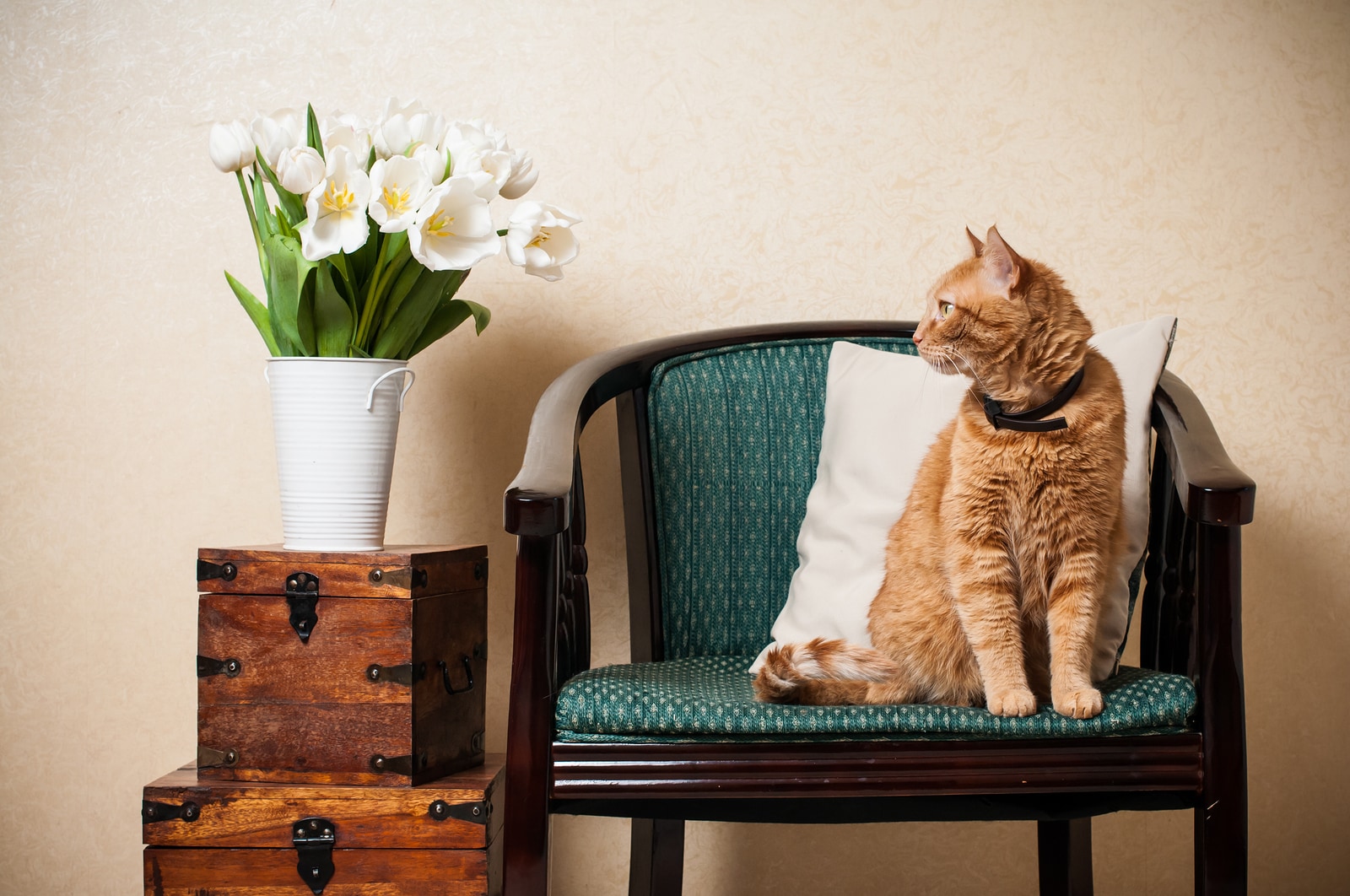Cats add so much joy to our lives, but the stains and odors that come with being a cat parent often bring frustration. Fortunately, making your own pet stain remover from simple ingredients can help you keep your house clean and fresh. DIY stain removers are safe to use around your pets (and usually cost less to make than store-bought cleaners). From urine to hairball to vomit stains, homemade cleaners can effectively remove the stain and the odor that sometimes lingers. Remember to do a spot-test on a small area before cleaning to make sure it won’t cause any damage or discoloration.
Materials: baking soda, vinegar, water, spray bottle, three old rags
Directions:
- Wipe up the vomit or hairball from the carpet or hard floor with a damp rag.
- If the vomit was on the carpet, after wiping it with a damp rag, sprinkle baking soda over the stain and let it sit for an hour to absorb the moisture. If the stain is on a hard floor, proceed to step 3.
- Mix vinegar and warm water in a large bowl (about 1 cup water to 1 cup of vinegar). Put the mixture into a spray bottle.
- Spray the stain with your mixture of vinegar and water. You’ll notice fizzing. Once the fizzing dies down, scoop off the baking soda as much as possible with a rag.
- Continue to lightly spray the stain and blot the stain with a clean rag. Repeat until the stain is gone. Be careful to not over-saturate the area.
Cat Urine Eliminator
Materials: vinegar, baking soda, hydrogen peroxide, dish liquid, enzyme cleaner, old rags, old towel
Directions:
- Use an old towel to absorb as much of the cat pee as possible and throw it away when you’re done.
- Sprinkle baking soda over the affected area and let sit for about ten minutes.
- Pour some vinegar on the baking soda and let it fizz for a few seconds before blotting the liquid with a fresh rag.
- Once the area looks clean, it’s time to eliminate the odor. Make a DIY pet stain-odor remover with a few tablespoons of hydrogen peroxide and a drop or two of dish liquid. Pour the mixture onto the stained area (to be safe, text the mixture on a spot of the carpet that is hidden or out of the way to ensure that it doesn’t discolor the carpet).
- Rub the hydrogen peroxide/dish soap mixture into the carpet and scrub the fibers, but blot it quickly so it doesn’t take the coloring out of the carpet. For hard floors, it may be better to put this mixture in a spray bottle and spray the area and wipe it.
- Blow a fan over the area to help it dry quickly. Although the area may seem fresh and clean, the uric acid in cat urine will recrystallize, so the next step is VERY important!
- After about 24 hours, soak the area with an enzyme cleaner and let it completely air dry. To keep your family members from stepping on the spot, cover the area with a laundry basket or aluminum foil. It may take a day or two to dry completely.
- Once the area is completely dry, clean as normal with a mop or vacuum and repeat enzyme treatment once a week if needed.
Reducing Cat Stains and Odors
After you’re done cleaning, shine a black light on a troublesome spot. It will show if cat urine is still present in the area. Sometimes it may seem like the urine is gone, but it can crystallize and stay present in carpet fibers. A black light shows the size of the stain that isn’t visible to the human eye or picked up by the human nose.
You are watching: DIY Cat Stain & Odor Remover That Actually Works
Read more : How To Make DIY Shaving & Body Oil
Finally, Vetstreet suggests having your vet evaluate your cat’s urinating behavior to make sure that their missing the litter box isn’t a sign of a urinary or other medical condition. You should make an appointment to see your vet for a possible therapeutic nutrition solution. Now that you know how to make your own stain remover, you’ll be able to take quick action and stay diligent in cleaning up messes.
Source: https://gardencourte.com
Categories: Recipe


